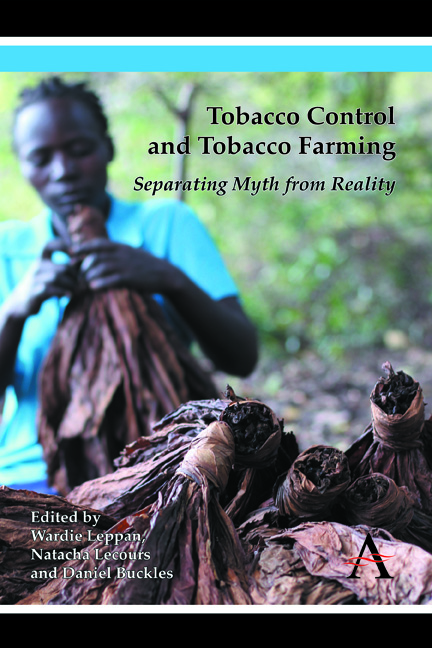Book contents
- Frontmatter
- Contents
- List of Figures, Tables and Photographs
- Foreword
- Preface
- Introduction: Separating Myth from Reality
- Section One The Determinants of Tobacco Leaf Demand
- Section Two Tobacco-Farming Conditions in Low- and Middle-Income Countries
- Section Three Economically Sustainable Alternatives to Tobacco
- Conclusion: Reframing the Debate on Tobacco Control and Tobacco Farming
- Annex: A Policy Brief on Tobacco Control and Tobacco Farming
- Contributors
Preface
Published online by Cambridge University Press: 05 November 2014
- Frontmatter
- Contents
- List of Figures, Tables and Photographs
- Foreword
- Preface
- Introduction: Separating Myth from Reality
- Section One The Determinants of Tobacco Leaf Demand
- Section Two Tobacco-Farming Conditions in Low- and Middle-Income Countries
- Section Three Economically Sustainable Alternatives to Tobacco
- Conclusion: Reframing the Debate on Tobacco Control and Tobacco Farming
- Annex: A Policy Brief on Tobacco Control and Tobacco Farming
- Contributors
Summary
The genesis of this book dates back to 1994 when the International Development Research Centre (IDRC) first became involved in supporting research for tobacco control in low- and middle-income countries (LMICs). From the very beginning, IDRC saw tobacco control as not “just” a crucially important health issue but also a broader development one. IDRC recognized that the rapid growth in consumption, brought about in part by changing trade regimes, had implications for a country's economy and autonomy in setting public-health regulations. Moreover, the growth in tobacco-related diseases was putting great stress on already over-stretched health systems and negatively impacting economic productivity. At the household level, tobacco use was found to exacerbate poverty due to the financial burden of addiction, healthcare spending and loss of productive life years.
In addition, the bulk of the world's tobacco production had shifted to LMICs. Despite the claims of the tobacco industry, early evidence was beginning to show that tobacco farming appeared to be a very hard way to make a living for small-scale farmers. The evidence suggested that:
• Tobacco farming was extremely labor intensive with farming families providing much of the unpaid labor (including, in many cases, children).
• The tobacco plant leached nutrients from the soil and required large amounts of pesticides. Other environmental impacts included severe deforestation in areas where the tobacco was flue-cured or smoke-cured.
- Type
- Chapter
- Information
- Tobacco Control and Tobacco FarmingSeparating Myth from Reality, pp. xv - xviiiPublisher: Anthem PressPrint publication year: 2014

